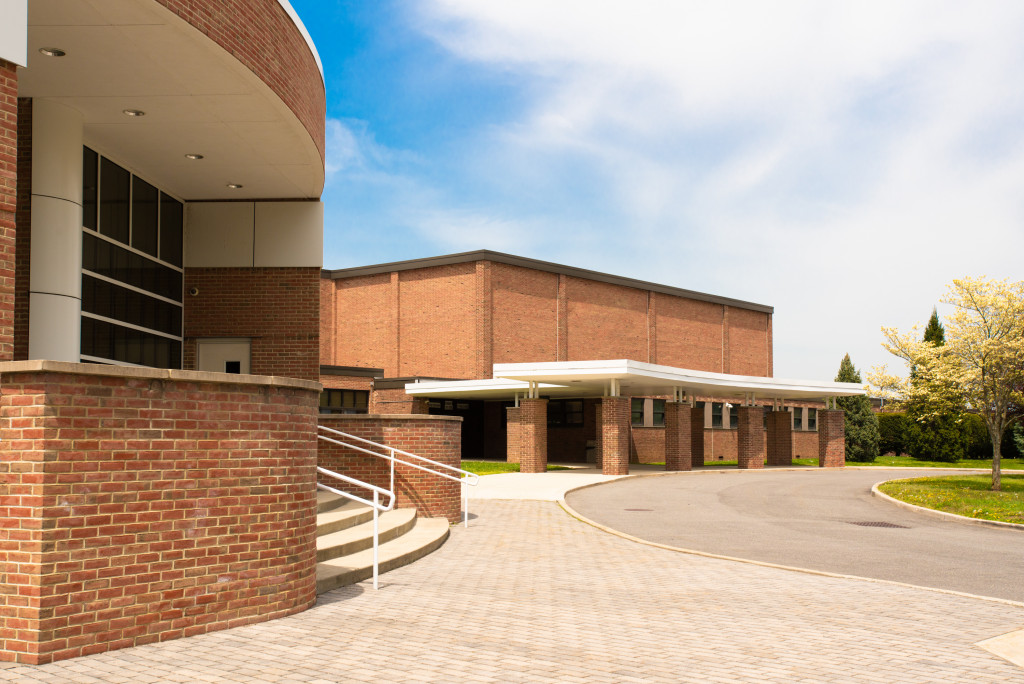- Developing a blueprint and securing funding are essential starting points in creating an educational facility.
- Construction involves coordination with contractors, adherence to safety regulations, and outfitting the facility.
- The facility’s opening marks a new era in learning and requires creating community awareness.
- The process of building an educational facility, though challenging, fosters holistic learning and community development.
Building an educational facility can be a challenging task. It requires careful planning, effective execution, and a lot of patience. Creating a space that supports holistic learning and development of students is a crucial step towards shaping the future. As an educator and someone devoted to supporting holistic development, here’s how to create an educational facility, whether by partnering with professionals or handling the process yourself.
Develop a Blueprint
The first step in creating an educational facility is to develop a blueprint. This process involves analyzing the needs of the students, understanding their academic requirements, and developing a space that supports their learning styles.
The blueprint should cover the layout of the facility, the amenities required, and the safety measures to be put in place. A lot of consultation and research goes into this stage to ensure that the final product meets the expectations of all stakeholders.
If possible, try to get input from the students themselves. This will enable you to gain valuable insights into what they need and how best to create an environment that supports their learning.
Secure Funding
Once the blueprint has been developed, securing funding is next. Building an educational facility requires a significant amount of investment. The funding source can be either public or private, depending on the ownership of the facility. Here are some ideas:
Filing Grant Applications
Securing a grant can provide a significant boost to your funding efforts. Governmental and non-governmental organizations often offer grants for educational projects that align with their objectives. Researching these opportunities and submitting a well-prepared grant application can help you secure the necessary funds. Remember to highlight how your project aligns with the grant’s objectives and the positive impact it will have on the community.
Raising Funds Through Donations
Donations are a reliable source of funding for many educational facilities. Launching a fundraising campaign can help draw attention to your project and encourage individuals, businesses, and philanthropic entities to contribute. Highlight the benefits that the facility will bring to the community and how it will positively impact the lives of learners. Online fundraising platforms can also be used to reach a wider audience.
Getting Loans from Financial Institutions
Financial institutions, such as banks and credit unions, can offer loans to fund your educational facility. Take time to research and compare the terms and conditions of various institutions to find the best fit. It’s crucial to consider the interest rates, repayment terms, and any potential penalties. Consulting with a financial advisor can be beneficial in this phase to ensure you make an informed decision.

Building The Facility
With funding secured, the next stage involves building the facility. This stage requires efficient project management and attention to detail. During this stage, it is essential to keep stakeholders informed of the progress to create a sense of ownership and accountability. Here are some critical steps:
Coordination with Contractors
Coordinating with contractors is a crucial step in bringing your blueprint to reality. This involves successful collaboration with various professionals, including architects, engineers, and builders. It’s during this stage that you draw on the expertise of these individuals to efficiently build a school.
Regular meetings should be held to monitor the progress of the project, address issues promptly, and ensure that everyone is aligned with the project’s goals and timelines. Good communication is vital to a successful partnership and a well-executed project.
Adherence to Building Codes and Safety Regulations
Adhering to building codes and safety regulations is a non-negotiable aspect of constructing an educational facility. These guidelines ensure the safety and welfare of the students and staff who will be using the facility.
It’s essential to work with a team that deeply understands these regulations and can implement them in every aspect of the construction. Regular inspections should be carried out to ensure compliance throughout the construction process. Non-compliance can lead to legal complications, delayed timelines, and increased costs, thus making adherence a top priority.
Outfitting The Facility
Once the facility is completed, the next stage involves outfitting the facility with the necessary resources and equipment. This stage consists of installing furniture, fixtures, equipment, and technological equipment such as computers and interactive whiteboards.
It is also the stage where the selection of teaching materials occurs. In this stage, it is essential to ensure that all resources and equipment support the learning needs of the students and the facility’s goals.

Opening The Facility
Finally, the last stage involves moving in and opening the facility. This stage involves welcoming students, introducing them to the space, and starting the teaching and learning process.
The opening ceremony tends to be a significant event as it marks the beginning of a new era of learning. Make sure to celebrate the hard work and effort that have gone into creating this space.
Invest in raising awareness of the facility and its mission to ensure it reaches a broad audience. Aim to create a sense of community among teaching staff, students, and other stakeholders. This will help build an environment of trust and cooperation that supports holistic learning.
Creating an educational facility involves several stages, from developing a blueprint to moving in and opening the facility. The process requires careful planning, efficient execution, and a lot of patience. However, despite the challenges, the end result is often a space that supports holistic learning and development. It is exciting to see the transformation from blueprint to reality and the impact that such a facility can have on the community.



